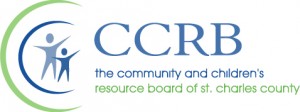Risk and Protective Factors
Compiled from the National Strategy for Suicide Prevention
Risk Factors
Risk factors for suicide are thought of as leading to or being associated with suicide; that is, people “possessing” the risk factor are at greater potential for suicidal behavior. Risk factors typically fall into three general categories:
Personal:
- Mental health disorders, particularly depression, anxiety and related mood disorders
- Alcohol and other substance use disorders
- Hopelessness
- Impulsive and/or aggressive tendencies
- History of trauma or abuse
- Major physical illnesses
- Previous suicide attempt
- Family history of suicide
Environmental:
- Academic, job or financial loss
- Relational or social loss
- Easy access to lethal means
- Local clusters of suicide that have a contagious influence
Social:
- Lack of social support and sense of isolation
- Stigma associated with help-seeking behavior
- Barriers to accessing health care, especially mental health and substance abuse treatment
- Certain cultural and religious beliefs (for instance, the belief that suicide is a noble resolution of a personnal dilemma)
- Influence of others who have died by suicide
Protective Factors
Protective factors reduce the likelihood of suicide, enhance resilience and may serve to counterbalance risk factors. Key protective factors for suicide include:
- Effective clinical care for mental, physical and substance use disorders
- Easy access to a variety of clinical interventions and support of help-seeking
- Strong connections to family and community support
- Support through ongoing medical and mental health care relationships
- Skills in problem solving, conflict resolution, and nonviolent handling of disputes
- Effective coping skills and sources for help
- Cultural and religious beliefs that discourage suicide and support self-preservation
Take a look at the warning signs you should know.









